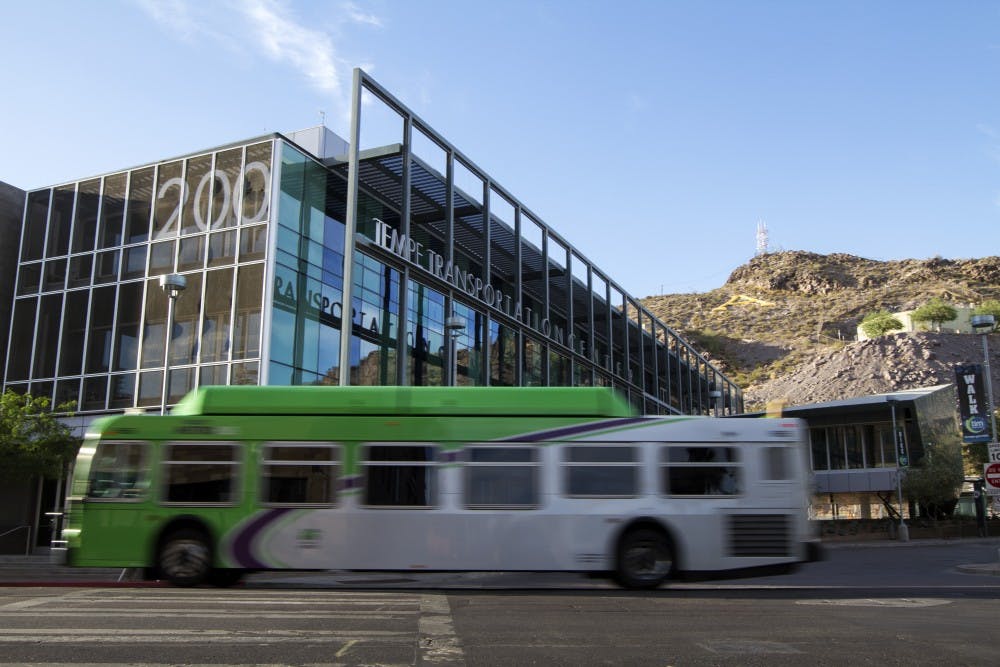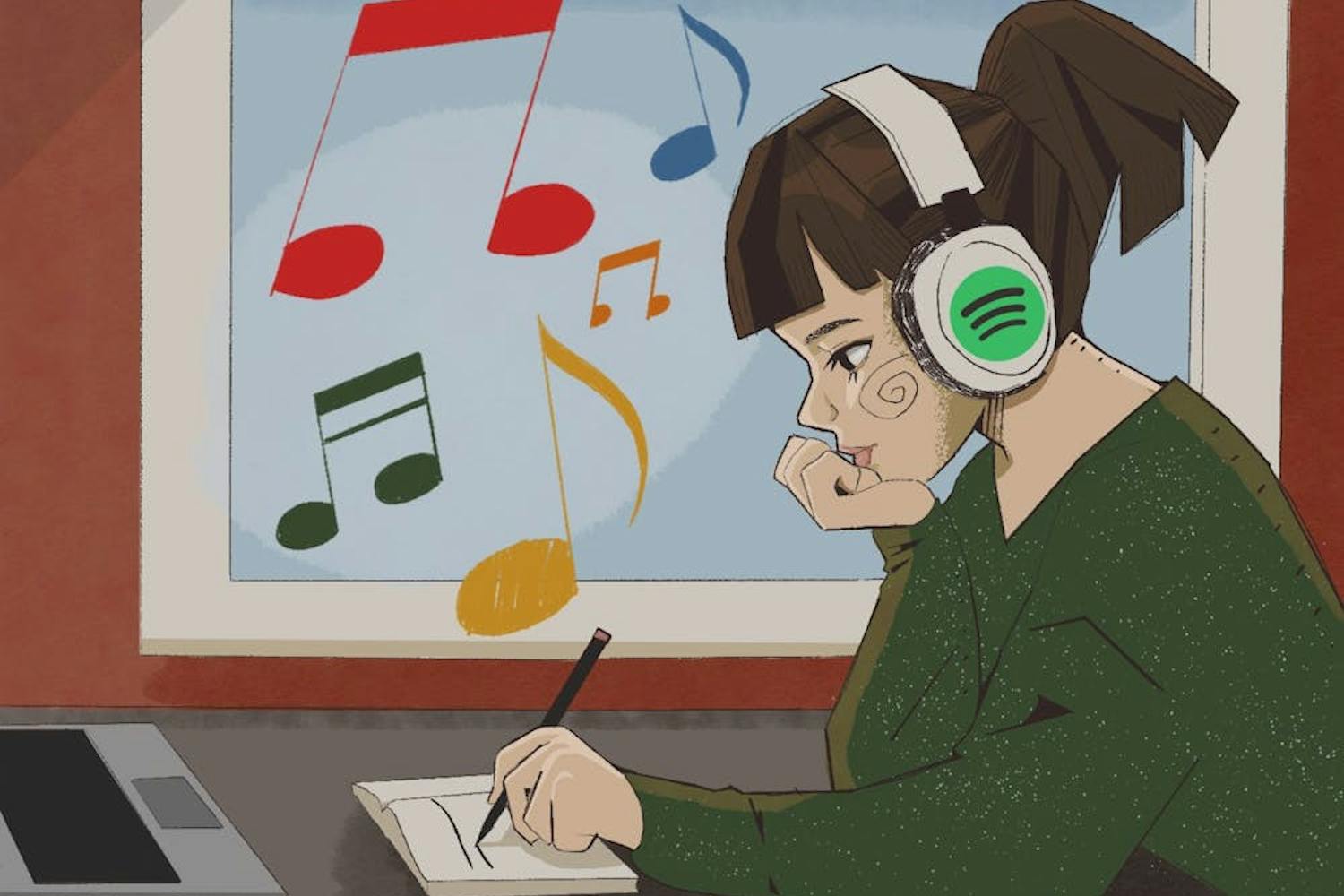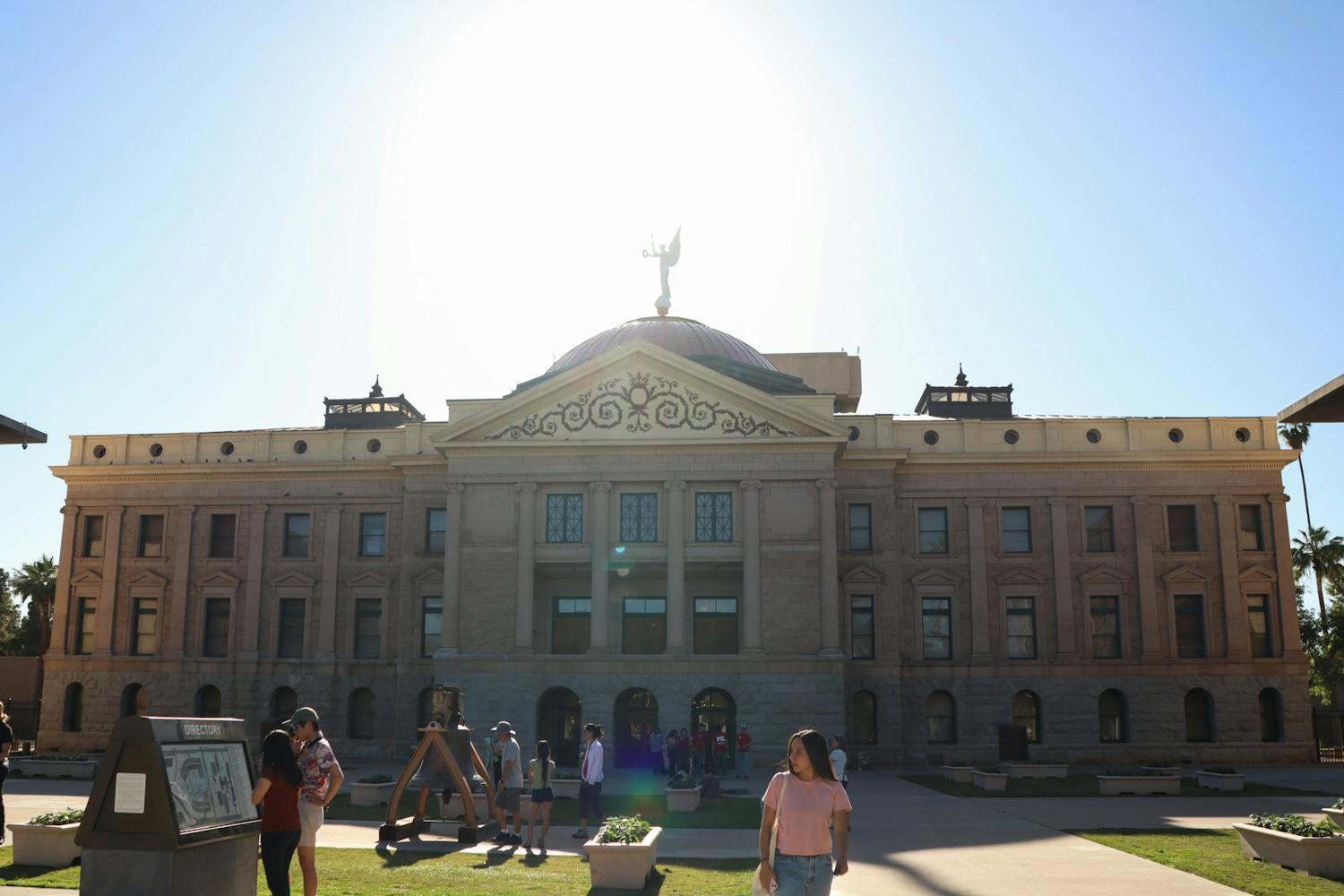 A Tempe metro bus passes by the Tempe Transportation Center, June 3, 2014. Project planners from the Tempe Transportation Department are working to update the Transportation Master Plan by emphasizing connections between activity centers and prioritizing corridors. (Photo by Sean Logan)
A Tempe metro bus passes by the Tempe Transportation Center, June 3, 2014. Project planners from the Tempe Transportation Department are working to update the Transportation Master Plan by emphasizing connections between activity centers and prioritizing corridors. (Photo by Sean Logan)Project planners from the Tempe Transportation Department hosted the first of a series of public meetings to share data and gather public input to update the Transportation Master Plan on May 29 at the Tempe History Museum.
The Tempe City Council adopted a comprehensive transportation plan in 2003 and last updated it in 2008, when the Metro light rail was opening. Now that six years have passed, it’s time to update the transportation plan with a focus on getting residents to their destinations and reducing trips in single-occupancy vehicles, Tempe Transportation spokeswoman Marie Chapple said.
“The best people to get input from are the ones who use the transit options, because they can have really good suggestions,” Chapple said.
Using the information gathered at public meetings this summer and demographic data, the planners will create a short-term plan for 2020 and a long-term plan for 2040, project planner Matthew Taunton said.
The short-term plan will consist of realistic projects that can begin now along with their costs, while the long-term plan will consist of ideas for “how we envision the future,” Taunton added.
“The goals of this plan are very specific,” Taunton said. “It really wants to emphasize connections between activity centers and prioritize corridors.”
The planners developed a series of maps based on density in categories including population, employment, race, low-income households, persons with disabilities, persons under 18 and persons over 65, Taunton said. They’re also looking at car crash data and bicycle and pedestrian data, along with how various intersections are preforming and how many people are riding public transit.
So far, the project planners found that there’s more traffic in northern Tempe than southern Tempe and decided Rural Road will be a major focal point of review because it’s so high in traffic volume and accident frequency, Taunton explained.
Aside from the data, the next steps are to evaluate “priority corridors, and where and how they connect,” Taunton said.
However, Tempe isn’t the only city looking to assess and update its public transportation system. Valley Metro is also preparing a study that will look at southeastern Phoenix and neighboring cities to evaluate its transit needs, Tempe Transportation Project Manager Robert Yabes said before opening up the floor for suggestions and questions.
“Tonight is about your ideas,” Yabes said, “We want to know what you think and where we need to be in the future. This is your city ... so we are here to listen to you.”
Residents can submit ideas and concerns online at www.tempe.gov until June 15. The next public meeting for the Transportation Master Plan is Aug. 4 at 6 p.m. at the Tempe History Museum located at 809 E. Southern Ave. The Tempe Streetcar meeting is June 12. For public meeting dates and locations, visit www.tempe.gov.
Reach the reporter at celovins@asu.edu or follow her on Twitter @CattLovins




